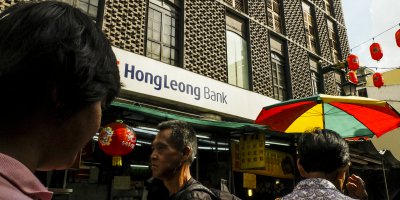
Micro borrowers might find it hard to get a loan because they don’t have any credit history. Source: Shutterstock
Can technology and education help provide better micro-loans?
MICRO-BUSINESSES in the APAC and across the world find it hard to get a loan from the bank because they have no credit history.
Using technology, startups in China and other parts of the world seem to have found a solution.
They believe that a model that factors in the number of friends a micro-borrower has on social media and the percentage of battery that their phone has on average before it is recharged, among other things, is a good indicator of whether or not they’ll repay the loan.
Butterfly FX Co-Founder Katherine Li, however, believes that there’s more to the micro-loans puzzle than just a smart algorithm.
Having graduated from Oxford with an MBA recently, Li co-founded Butterfly FX with her classmate Marisha Naz. The duo believes that education is crucial when extending credit to micro-borrowers for the first time.
“Learning and understanding credit is key for first-time borrowers,” Li emphasized to Tech Wire Asia.
“Credit ratings usually factor in a borrower’s willingness to pay and their ability to pay.
“Ability to pay is assessed by evaluating the borrower’s financial data (bank records, past history, etc). This is something micro-borrowers don’t have since they’re unbanked or underbanked in the first place.
“Willingness to pay, on the other hand, is something micro-borrowers display — and Butterfly FX helps lenders gauge that willingness by educating potential borrowers about credit and assessing them on their understanding of credit afterward.”
The concept makes sense because those that have never borrowed previously don’t really understand the importance of sticking to a repayment schedule and making payments on time — or the repercussions of failing to do so.
Without such training, borrowers might be unable to make the right choice about prioritizing paying back the lender each month or spending on something else if they’ve been unable to meet sales forecasts for some reason and therefore have concerns about managing their cashflows.
Having a grasp of the concept of credit, Li believes is important, because it also helps micro-borrowers make informed decisions and avoid ignoring their rights and responsibilities — to their detriment in the long-term.
The education that Butterfly FX delivers to new borrowers through lenders and lending platforms is essentially an e-learning package admits Li, but believes it’s an important component that lenders must factor into their credit assessment models when trying to tap into Southeast Asia’s micro-credit market.
According to a recent report by SME Finance Forum, World Bank Group, and IFC, 37 percent of South Asian micro-enterprises and 34 percent of East Asia and Pacific micro-enterprises are fully credit-constrained.
The report defines fully credit-constrained firms as those that find it difficult to obtain credit and have no external source of financing because they either their applications were rejected or they were discouraged from applying in the first place.
As Li explained, the micro-credit market is a multi-billion-dollar opportunity for lenders that tap into technology. How they use that technology to transform their assessment and evaluation process, however, is what will make all the difference to SMEs.
“As an industry, we want to ensure that technology doesn’t make inclusive finance more exclusive. Data from a variety of sources is important, but so is education,” concluded Li.
READ MORE
- Ethical AI: The renewed importance of safeguarding data and customer privacy in Generative AI applications
- How Japan balances AI-driven opportunities with cybersecurity needs
- Deploying SASE: Benchmarking your approach
- Insurance everywhere all at once: the digital transformation of the APAC insurance industry
- Google parent Alphabet eyes HubSpot: A potential acquisition shaping the future of CRM






